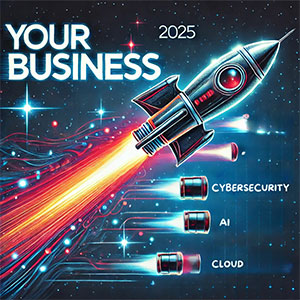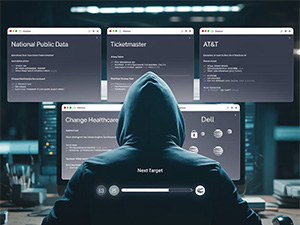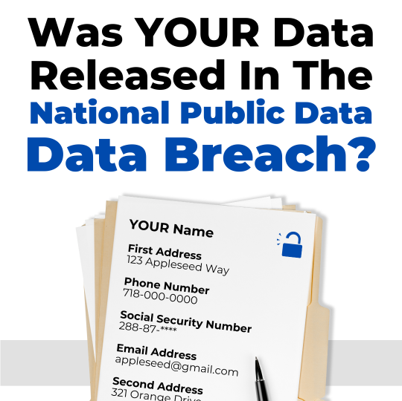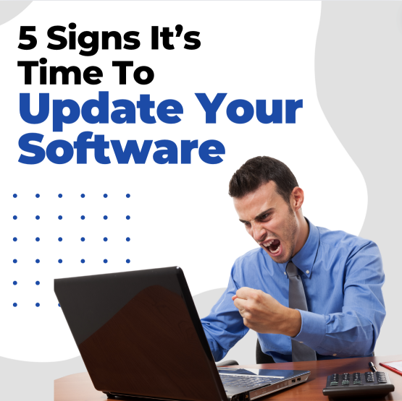Think hackers only target big corporations? Think again.
With the rise of artificial intelligence (AI), cyber-criminals are now able to scale their attacks more effectively than ever—and small businesses are at the top of their list. Why? Because while you might not have the resources of a Fortune 500 company, you still have valuable data they can exploit.
Gone are the days of slow, simplistic hacking tools. AI gives cyber-criminals smarter, faster methods to bypass businesses that aren’t prepared. Without a solid defense in place, they’ll find a way in.
Here’s how AI is revolutionizing cyber-crime and, more importantly, how you can protect your business from becoming a target.
AI-Powered Phishing Scams
Traditional phishing relied on generic, poorly written emails—often full of errors. AI has changed the game by enabling hackers to craft highly personalized, convincing messages. Using AI, attackers can:
- Scrape social media and business websites for personal details
- Mimic real contacts or brands
- Adapt language to sound authentic
Imagine receiving an email that looks like it’s from your bank, addressing you by name and referencing a recent “transaction attempt” that was declined. It asks you to “click here to confirm your information.”
If you click the link, you could be led to a fake website designed to steal your login credentials or even install malware on your system. The result? Hackers gain access to your accounts, steal sensitive data, or launch further attacks.
Automated Vulnerability Scanning
AI is now used to automate scanning for weaknesses in small businesses’ systems. These tools can:
- Identify outdated software or weak network configurations
- Target vulnerabilities faster than ever
For small businesses with limited IT resources, these automated attacks are a growing threat. Hackers can find and exploit weaknesses within minutes, leading to costly downtime, data theft, or even a complete loss of access to your network.
AI-Driven Malware
AI also enables hackers to create malware that evolves quickly. These malicious programs:
- Learn how antivirus software works to avoid detection
- Adapt to exploit new vulnerabilities in real time
AI-powered ransomware, for example, can lock down systems faster and more effectively, demanding ransoms and putting small businesses at heightened risk.
Deepfake Technology for Social Engineering
AI-generated deepfakes are no longer just a Hollywood tool. Cyber-criminals use deepfake technology to impersonate trusted contacts or executives, convincing employees to:
- Transfer funds
- Share sensitive data
For example, imagine your CFO receives a call that sounds exactly like your CEO, instructing them to wire funds urgently to close a deal. The voice is so convincing that the CFO follows through, only to discover it was a fraudulent request.
Deepfakes make these scams incredibly believable, leaving even the most cautious employees vulnerable.
Advanced Password Cracking
AI-powered algorithms can guess passwords at lightning speed, even cracking moderately strong ones by recognizing patterns. This makes traditional passwords less secure than ever.
Tip: Multi-factor authentication is essential to combat this growing threat.
How to Protect Your Business from AI-Powered Cyberattacks
- Invest in AI-Driven Defenses: Use cybersecurity tools that leverage AI to detect and respond to threats in real time.
- Educate Your Team: Train employees to recognize phishing and social engineering tactics.
- Conduct Regular Audits: Regularly check your IT infrastructure for vulnerabilities.
- Strengthen Authentication: Implement multi-factor authentication and encourage strong, unique passwords.
- Partner with Experts: Managed IT providers can proactively monitor your systems and implement security solutions.
AI is transforming cybersecurity for both attackers and defenders. While hackers use AI to target vulnerabilities, businesses can also use it to strengthen their defenses. Staying informed and proactive is key to keeping your business safe in this evolving digital landscape.
Ready to fortify your business? Click here or call us at 214-550-0550 to schedule a FREE Cybersecurity Assessment today and ensure your defenses are AI-proof.










